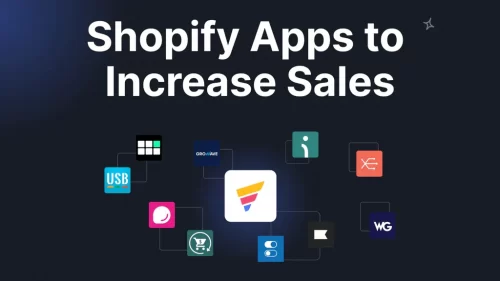Many companies still hold onto the old-fashioned on-premises infrastructure. These lack efficiency, scalability, and agility. Maintaining these business solutions costs more on personnel, hardware, and software. The scalability limitations make businesses unable to handle sudden demand spikes and growth levels. Also, companies will struggle to meet complex and demanding data compliance and security requirements.
Cloud transformation services offer streamlined solutions with advanced agility, efficiency, and scalability. They present robust compliance capabilities, enabling organizations to leverage the capabilities of cloud providers to streamline operations. The following points are seamless ways to adopt cloud transformation services.
1. Objectively Plan Your Cloud Adoption Project
The entry strategy to adopting cloud transformation services is defining your goals and objectives. Strategizing and planning your cloud shift aligns it with the business strategy. Understand the core purpose of adopting cloud services and budget accordingly. Determine whether shifting to cut down on infrastructure and hardware costs.
Do you intend to accommodate fluctuating workloads and high-growth demands? Employ cloud-native services and technologies to quicken time-to-market for new products and development cycles. Implement robust disaster recovery solutions, considering the redundancy capabilities. The adoption of cloud services can expand your geographic reach and boost accessibility for global users.
Develop robust goals on legal system migration and modernization requirements. Evaluate the automation and management tools needed to streamline processes and reduce human error.
2. Comprehensively Assess To Adoption Project
Thoroughly evaluate the current infrastructure, data, and applications to identify workloads requiring migration to the cloud. Create an inventory of data assets, applications, and infrastructure. Create clean documentation of data volumes, hardware specifications, and software versions. Engage with professional stakeholders to understand business constraints, requirements, and priorities. Look for compliance requirements, performance indicators, and service level agreements.
Evaluate every workload to uncover scalability requirements, resource utilization, and performance metrics. Review your company’s regulatory obligations and security posture. Also, analyze the costs involved, including operational overhead, software licensing fees, and maintenance expenses. Identify risks likely to occur during cloud mitigation, including regulatory non-compliance, data loss, performance degradation, and downtimes.
3. Cloud Service Provider
Identify and pick the best cloud service provider. Choose one to offer the specific range of services you need. Evaluate fundamental aspects such as machine learning, developer tools, networking, databases, storage, and analytics. Explore the cost structures and pricing models of different cloud providers. They should align with your cost and budget expectations. Check the cloud services provider’s infrastructure performance and reliability. Consider the performance guarantees, data center availability, uptime SLAs, and network latency.
Additionally, examine the compliance certificates and security measures the cloud provider offers. Reflect on identity management, data encryption, access controls, and regulatory compliance. Choose providers offering elastic and scalable infrastructure to accommodate your growing workload requirements. Choose a provider with auto-scaling capabilities and flexible scaling options.
The geographic coverage and presence of the cloud provider’s data regions and centers are fundamental considerations. Evaluating the ease of interoperability and integration with tools, systems, and platforms in your IT environment is vital.
4. Security and Compliance
The cloud migration must meet all compliance and security regulations. Encrypting data in transit and at rest optimizes security and prevents unauthorized access. Use access management solutions to manage user privileges, permissions, and roles. Implement secure security measures, including prevention systems, firewalls, virtual networks, and intrusion detection systems. These are essential protection measures for preventing malicious activities and unauthorized access.
Utilize multi-factor authentication to access critical applications and systems. These systems need users to use biometric authentication, SMS codes, and authenticator apps. Event management and security information solutions help you aggregate log data from multiple sources. Conduct compliance audits to ensure your cloud migration process meets industry standards and relevant regulations.
5. Cost Optimization Strategies
Explore resource utilization and performance metrics when strategizing to migrate to the cloud. Ensure rightsized instances and storage resources match specific workload requirements. Set aside savings plans and reserves to suit the predicted workloads. These are integral instances for cutting costs and aid with load balancing and auto-scaling. It is an effective method for scaling resources down during off-peak and up during peak periods.
Correctly implement data lifecycle management policies to tie data to cost-effective storage class. The storage classifications depend on performance requirements and access frequency. Evaluate the cost chargeback and allocation mechanism. These are mandatory for linking cloud costs to specific projects, departments, and teams. Continuing monitoring and optimizing cloud spending helps you identify areas for improvement.
Understand and implement all strategies usable for cutting down costs. Learn about the service upgrades and deployment models and how they affect costs.
6. Perfect Deployment Model
The deployment model is the channel through which you implement the cloud. Many cloud service providers offer hybrid, public, and private options. Public serverless environments are IT models through which third parties manage infrastructure and computing. The provisions come from the vendor as pay-as-you-go models. They are the most economical models with superior reliability and near-unlimited scalability. Public models require no maintenance, which cuts operation costs.
Private serverless environments are company-owned services managed internally. The services are exclusively for specific businesses. Providers host private services through a third party or an on-premise vendor. The unique approach provides better flexibility, ensuring you can personalize your environment to their preferences. Private serverless solutions offer more control, enabling higher privacy and security levels.
Hybrid deployment models blend public and private services to deliver superior solutions. Organizations using these models mix specific private and public cloud features for optimal efficiency. Many instances involve handling communication services externally and running applications and data in private networks. The power of this approach is in enhancing control over data privacy and security. Companies can leverage several aspects of the public serverless environments with private networks.
Wrapping Up
Cloud transformation services help to improve the agility and innovativeness of your business. The first stage for success is defining clear goals and objectives that match your business’s strategy. Run an in-depth infrastructure assessment and ensure you select a reliable cloud provider. Make sure to implement robust security measures and prioritize compliance and security.
Ensure correct regulatory adherence when migrating sensitive applications and data. Develop a robust cost optimization strategy, ensuring you leverage all tools offered by cloud providers. These strategies help in the effective control and monitoring of cloud spending.
Also Read: Software Testing YouTube Channels









